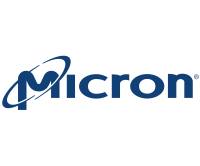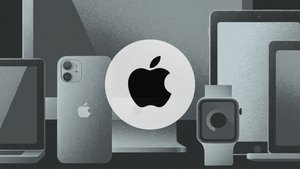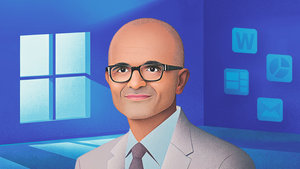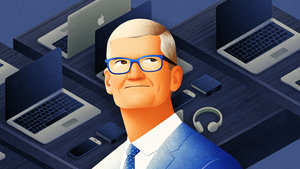
Tim Cook: Architect of Apple’s Modern Success

Timothy Donald Cook was born on November 1, 1960, in Robertsdale, Alabama. He earned a Bachelor of Science in Industrial Engineering from Auburn University in 1982 and later an MBA from Duke University's Fuqua School of Business, where he was recognized as a Fuqua Scholar. His professional journey began at IBM, where he worked for 12 years, focusing on manufacturing and supply chain management, ultimately rising to the position of Director of North American Fulfillment.
Career Before Apple
After leaving IBM, Cook joined Intelligent Electronics as Chief Operating Officer of the Reseller Division, overseeing logistics and supply chain operations. He later moved to Compaq as Vice President of Corporate Materials, managing procurement strategies. However, his tenure at Compaq was brief, as he was soon recruited by Steve Jobs to join Apple—a decision that would shape the future of the company.
Revolutionizing Apple’s Supply Chain
When Tim Cook joined Apple in 1998 as Senior Vice President for Worldwide Operations, the company was in a precarious financial position. Apple was burdened with excessive inventory, inefficient supply chains, and slow production cycles. The company had a complex network of suppliers and manufacturers, leading to high costs and significant risks in product delivery. At that time, Apple’s operational inefficiencies were a major obstacle to its growth, and Cook was tasked with turning things around.
Implementing Just-in-Time (JIT) Manufacturing
One of Cook’s most significant contributions was the adoption of the just-in-time (JIT) manufacturing system, a strategy pioneered in the automotive industry. JIT reduced Apple’s inventory levels by ensuring that components were delivered to factories only when they were needed, rather than stockpiled in warehouses. This approach minimized waste, lowered storage costs, and accelerated Apple’s ability to bring new products to market. Instead of holding weeks or months of inventory, Apple could now operate with only a few days’ worth of supplies, significantly improving cash flow and reducing financial risk.
| Company | Market Cap | Industry | |||
|---|---|---|---|---|---|

|
Apple Inc
NASDAQ:AAPL
Loading...
|
$4T | Technology | ||
Streamlining Supplier Relationships
Cook also restructured Apple’s supply chain by forming strategic partnerships with key suppliers. He negotiated exclusive agreements with component manufacturers, ensuring Apple had priority access to essential parts like processors, memory chips, and displays. This allowed Apple to secure high-quality materials at competitive prices, giving it a cost advantage over competitors. For example, Apple pre-paid billions of dollars to secure NAND flash memory supplies, ensuring steady access to components used in iPhones and iPads.
Optimizing Manufacturing and Logistics
Recognizing inefficiencies in Apple’s production process, Cook closed several of the company’s own factories and warehouses, shifting manufacturing to third-party suppliers like Foxconn and Pegatron in Asia. This move significantly reduced fixed costs while maintaining tight quality control. Cook also established a centralized, data-driven logistics network that provided real-time tracking of inventory, allowing Apple to respond swiftly to demand fluctuations.
To improve global distribution, Cook optimized Apple’s shipping and warehousing strategies. He minimized transportation time by selecting suppliers closer to assembly plants and introduced a sophisticated forecasting system to anticipate product demand. This ensured that Apple’s flagship products, such as the iPhone and MacBook, were always available when consumers wanted them.
Financial Impact and Competitive Advantage
Cook’s supply chain overhaul dramatically improved Apple’s profitability. By reducing inventory levels, streamlining production, and optimizing supplier contracts, he cut Apple’s operational costs by billions of dollars. This freed up capital that could be reinvested in research and development, marketing, and product innovation. Under Cook’s leadership, Apple transformed from a company struggling with inefficiencies to a model of operational excellence in the tech industry.
Today, Apple’s supply chain remains one of the most efficient and tightly controlled in the world, allowing the company to maintain high profit margins while scaling production to meet global demand. Cook’s visionary approach to supply chain management not only saved Apple in the late 1990s but also set the foundation for its dominance in the 21st century.
| Company | Profitability Score | Market Cap | Industry | ||
|---|---|---|---|---|---|

|
Apple Inc
NASDAQ:AAPL
Loading...
|
77
/ 100
|
$4T | Technology | |
Driving Apple’s Global Expansion
As Apple's efficiency improved, Cook took on broader responsibilities, becoming Chief Operating Officer (COO) in 2005. He played a key role in expanding Apple's global footprint, ensuring seamless supply chain operations and product availability worldwide. Under his leadership, Apple successfully launched and scaled the iPod, iPhone, and MacBook, strengthening its dominance in consumer electronics.
Cook demonstrated his leadership when he stepped in as interim CEO in 2009 and 2011 during Steve Jobs' medical leaves. His ability to maintain Apple’s stability, oversee major product launches, and reassure investors proved his readiness to lead the company long-term. His steady approach during these transitions positioned him as the natural successor to Jobs.
On August 24, 2011, Tim Cook was officially named CEO of Apple, following Steve Jobs' resignation. Under Cook’s leadership, Apple expanded beyond hardware into services, launching Apple Pay, Apple Music, and Apple TV+. He also drove the development of new product categories such as the Apple Watch and AirPods while leading Apple’s transition to its own M-series processors, reducing reliance on third-party chip manufacturers.
Financial Growth and Market Dominance
Since Cook became CEO, Apple’s market capitalization has skyrocketed from approximately $350 billion in 2011 to over $3 trillion. He optimized Apple’s revenue streams by expanding its services division, increasing recurring revenue through subscriptions, and strengthening its presence in emerging markets. Cook’s ability to balance innovation with financial discipline has made Apple one of the most valuable companies in the world.
Under Cook, Apple has deepened collaborations with other tech giants, including strategic deals with Microsoft, Google, and leading semiconductor manufacturers. He has also focused on artificial intelligence and augmented reality, laying the groundwork for Apple's future growth. The company's push into sustainability, with commitments to carbon neutrality and ethical sourcing, reflects Cook’s broader vision for corporate responsibility.
Tim Cook’s leadership has cemented Apple’s position as a global technology leader. His emphasis on operational excellence, financial strength, and product innovation has enabled Apple to thrive in a highly competitive industry. As Apple continues to expand into AI, AR, and other emerging technologies, Cook remains focused on ensuring long-term growth while maintaining Apple's commitment to design, privacy, and sustainability.

Dr. Viktor Kalm is a Senior Investment Analyst at Alpha Spread. He has over seven years of experience in corporate finance, specializing in financial modeling, business valuation, and strategic planning services. Previously, as a hedge fund manager, he focused on private equity management, consistently delivering positive returns to his clients.

Dr. Viktor Kalm is a Senior Investment Analyst at Alpha Spread. He has over seven years of experience in corporate finance, specializing in financial modeling, business valuation, and strategic planning services. Previously, as a hedge fund manager, he focused on private equity management, consistently delivering positive returns to his clients.
 JNJ
JNJ
 HD
HD
 V
V
 CAT
CAT
 PG
PG
 TXN
TXN
 AAPL
AAPL
 NVDA
NVDA
 ADBE
ADBE
 MSFT
MSFT

 AAPL
AAPL

 AAPL
AAPL
 NVDA
NVDA
 GOOGL
GOOGL
 META
META
 MSFT
MSFT
 AMZN
AMZN
 TSLA
TSLA

 HCA
HCA
 MU
MU
 AAPL
AAPL
 NVDA
NVDA
 GOOGL
GOOGL
 META
META
 MSFT
MSFT
 AMD
AMD
 AMZN
AMZN
 TSLA
TSLA
 2330
2330

 AAPL
AAPL
 NVDA
NVDA
 GOOGL
GOOGL
 META
META
 MSFT
MSFT
 AMZN
AMZN
 TSLA
TSLA
































